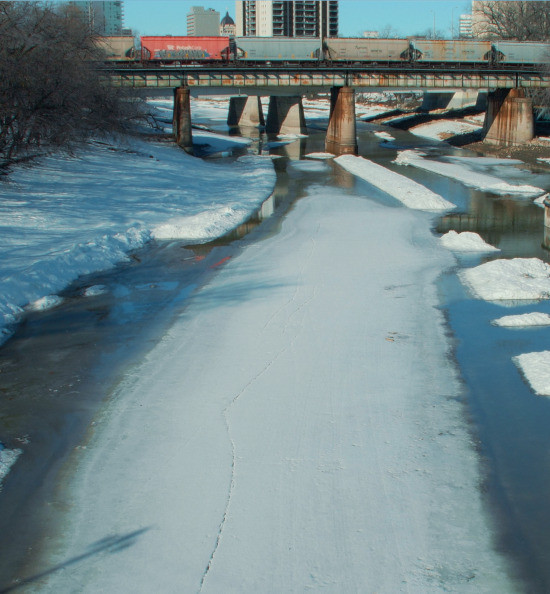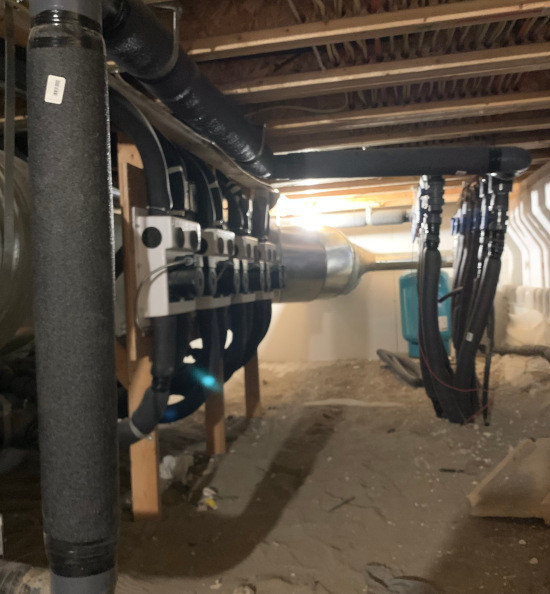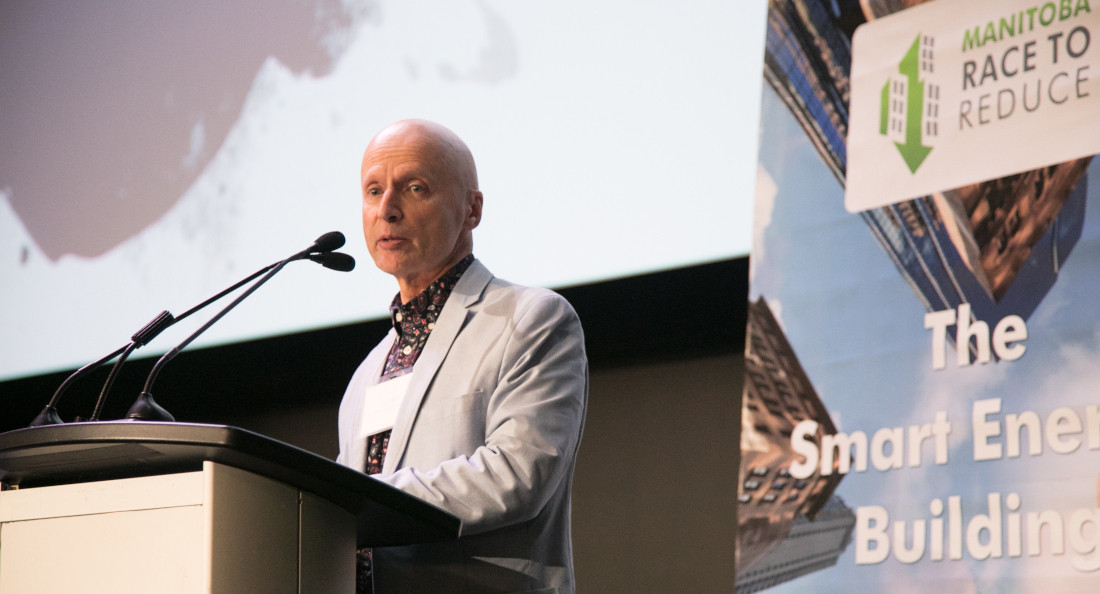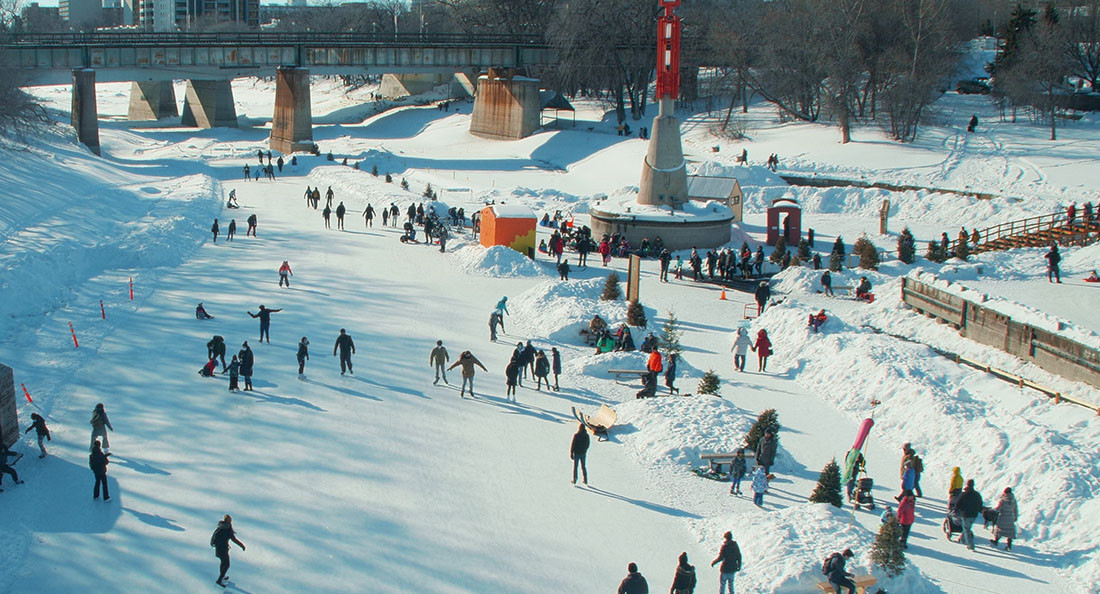Winterpeg or Warmerpeg?
Environmental groups push for systemic change
Although Winnipeg is known as a winter city, there are many days during the season when it’s too cold to spend time outdoors. But this year, it’s the warmer temperatures that are keeping people off the ice.
El Niño is a climate pattern characterized by warm, above-average sea surface temperatures in the eastern Pacific Ocean. These warmer temperatures have turned skating rinks to mush, shut down cross-country ski trails and melted the snow on toboggan hills.
While the El Niño is temporary, Manitoban climate activists are using this weather event to start conversations about the need for systemic change.
“What we see right now is disheartening,” Eric Reder, a wilderness and water campaign director, says. “It’s not going to get any better – it’s only going to get worse, because we haven’t eliminated the greenhouse-gas emissions that (are) causing our problem.”
Reder, who works for Manitoba’s chapter of the Wilderness Committee, says the warm weather has flooded the
skating rinks he makes on the Seine River in St. Boniface. People who stop along the path ask him about his rinks while reflecting on their environmental concerns for the future.
Over a 10-day period from Jan. 28 to Feb. 6, the average minimum temperature in Winnipeg was 17.6 degrees Celsius above normal, which makes it the warmest 10-day period on record in the city since 1872.
On Feb. 24, Environment and Climate Change Canada recorded a new high in Winnipeg when the temperature reached 6.9 degrees Celsius at The Forks and 6.1 degrees Celsius at the airport, where official temperatures are marked. Both of these highs surpassed the record of 5.4 degrees Celsius set in 1998.
These abnormal winter temperatures will also affect the weather this summer in Manitoba. A lack of precipitation and moisture in the ground will lead to a drought, causing an increase in the potential for forest fires.
Last July, Reder remembers travelling with his 15-year-old son through the Okanagan region of British Columbia before a suspected lightning strike started a forest fire, burning 4,823 hectares of land around Adams Lake.
“There was ash, like falling from the sky, (and) we couldn’t go hiking, because we were too worried about ... sucking more things into our lungs,” he says.
Extreme weather events like this are concerning and will occur more frequently until the province acts on systemic changes to eliminate fossil fuels and greenhouse-gas emissions, Reder says.
“One thousand of us could stop driving cars, but until we change the system, we’re still screwed ... this is the fight of the lifetime for the fate of society,” he says.
Climate change affects every part of people’s lives, and it can be tough knowing what actionable steps to take, Reder says. Feelings of climate grief or eco-anxiety may come from not knowing where to start, especially when the solutions seem vague and intangible.

A still from The Snowball Effect (Supplied photo)
The big picture
Under the Progressive Conservative government in 2017, Reder says the province published the Made-in-Manitoba Climate and Green Plan without hosting a public town hall or consulting with environmental groups in Manitoba.
As a result, five organizations created Manitoba’s Climate Action Team to investigate climate solutions and make a list of policy recommendations. This coalition includes the Wilderness Committee, Climate Change Connection, the Canadian Centre for Policy Alternatives, Manitoba Energy Justice Coalition and the Green Action Centre.
In 2021, the team published the Manitoba’s Road to Resilience report, featuring extensive research on the pathway to a climate-resilient future that eliminates fossil-fuel use within the three largest sectors: buildings, transportation and food and agriculture.
Reder says the biggest challenge facing the Climate Action Team is the fact that 60 per cent of homes in the province are heated by burning natural gas.
According to the 2018 Emissions Gap Report, the United Nations Environment Programme (UNEP) is calling for a 45 per cent reduction in the total annual emissions from the 2010 levels by 2030. They also want to achieve net-zero emissions worldwide by 2050.
Achieving this goal would mean Manito- ba would have to reduce its building-sector emissions by 4.7 per cent every year until 2030, and more reductions by 2050, according to the Road to Resilience report.
“We need to get people to realize that fossil gas is burning up our world,” Reder says. Members from the Climate Action Team are pushing for buildings, old and new, to be converted from natural gas to biomass, passive solar and geothermal alternative heat-energy sources.
Climate Change Connection (CCC) project director Curt Hull says geothermal heating is far more energy efficient. Hull says geothermal heating systems, which draw temperatures from the ground to heat or cool inside air depending on the season, could reduce annual costs by 50 to 70 per cent.

A still from The Snowball Effect (Supplied photo)

Geothermal piping in a residential home. Manitoba climate advocates say that replacing natural-gas heating with geothermal heating is essential to lowering the province’s emissions. (Supplied photo)
The affordability of alternative energy solutions
Hull says creating a geothermal utility paired with upgrading the energy efficiency within buildings would make a huge difference.
Doing so could help solve the home-heating problem and take “a big chunk out of energy poverty in this province, because there’s an inordinate number of people who are forced to choose between being warm and being fed,” Hull says.
The average single-family household would pay approximately $449 per year using geothermal heating, as opposed to paying $991 per year using a high-efficiency gas furnace or $1455 conventional gas furnace, according to CCC’s website.
Reder says the future costs of climate change are going to be “debilitating,” because the cost of gas pumps has gone up, and people are concerned with affordability.
People need to see the return on investment from things like switching to geothermal, he says.
These harder discussions with the provincial government need to look at ways to “ensure that folks can fight climate change, can change the system and can keep a roof over their heads and food on their table.”
Prairie Climate Centre (PCC) filmmaker Erika MacPherson says the social determinants of health are huge when it comes to climate impacts, because people who can’t afford air conditioning during a heatwave are going to be at a higher risk of experiencing heat exhaustion or heat stroke.
People who face the highest risk include older adults, infants and children, folks ex- periencing houselessness and those with chronic health conditions or taking certain medications.
To mitigate these risks, the PCC collaborates with communities in Manitoba, help- ing people understand how climate change impacts them and how to responsibly prepare for the future.

Some of the Prairie Climate Centre team at the Adaptation Futures conference in Montreal, October 2023. From left: Marcel Kreutzer, Eromose Ebhuoma, Christey Allen, Danny Blair, Erika MacPherson, Annie Martel, Izabella Robak, Matthew Loxley, Hetxw’ms Gyetxw (Brett Huson). (Supplied photo)
What comes next
Since the provincial election on Oct. 3, Hull says he and other Climate Action Team members have had many meetings with environment minister Tracy Schmidt about the policy recommendations outlined in Manitoba’s Road to Resilience report.
“I’m happy to say that the new government has been very receptive,” he says. “They’re talking the right language.”
Reder also said Premier Wab Kinew’s government seems to be taking climate initiatives more seriously, and he hopes this momentum will continue.
According to Kinew’s mandate letter to Schmidt on Oct. 19, the province expects to implement an Affordable Home Energy Program with the goal of helping people switch to geothermal heating.
The letter also said they will create a roadmap toward making the energy grid net-zero by 2035 and meet net-zero targets by 2050.
The provincial government did not respond to requests for comment.
While there is a lot of work to be done, Reder says, “the road to resilience is going to come to fruition. It’s (just) a matter of when.”
“Climate is so important for everybody that we should see the government working together on this. It doesn’t matter which side of the floor or the House or which colour their party is, they need to be sitting in a room saying, ‘How are we going to get there?’” he says.
“If you can get the government to do that, you’re going to signal to the general public that this issue transcends politics.”
It’s important to have people in positions of power who have climate at the forefront of their agenda, MacPherson says.
She says that although she has a 21-year-old daughter who has to grow up in a world that has become more uncertain by the day, climate resilience means having a sense of possibility. Otherwise, people feel crushed.
“We can work together, and we can put a lot of pressure on the government, and we can figure this out, but we have to take care of each other,” she says.

Curt Hull, project director of Climate Change Connection (Supplied photo)
Published in Volume 78, Number 19 of The Uniter (February 29, 2024)







